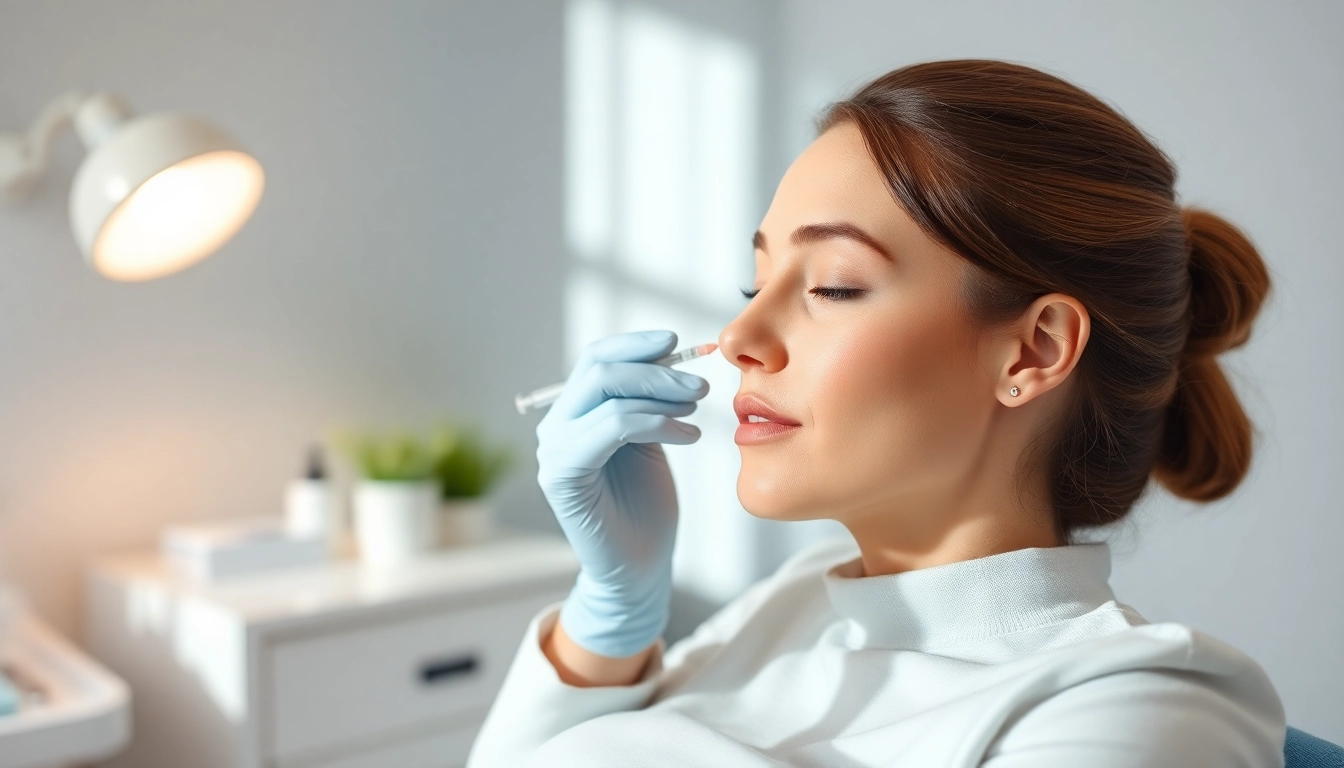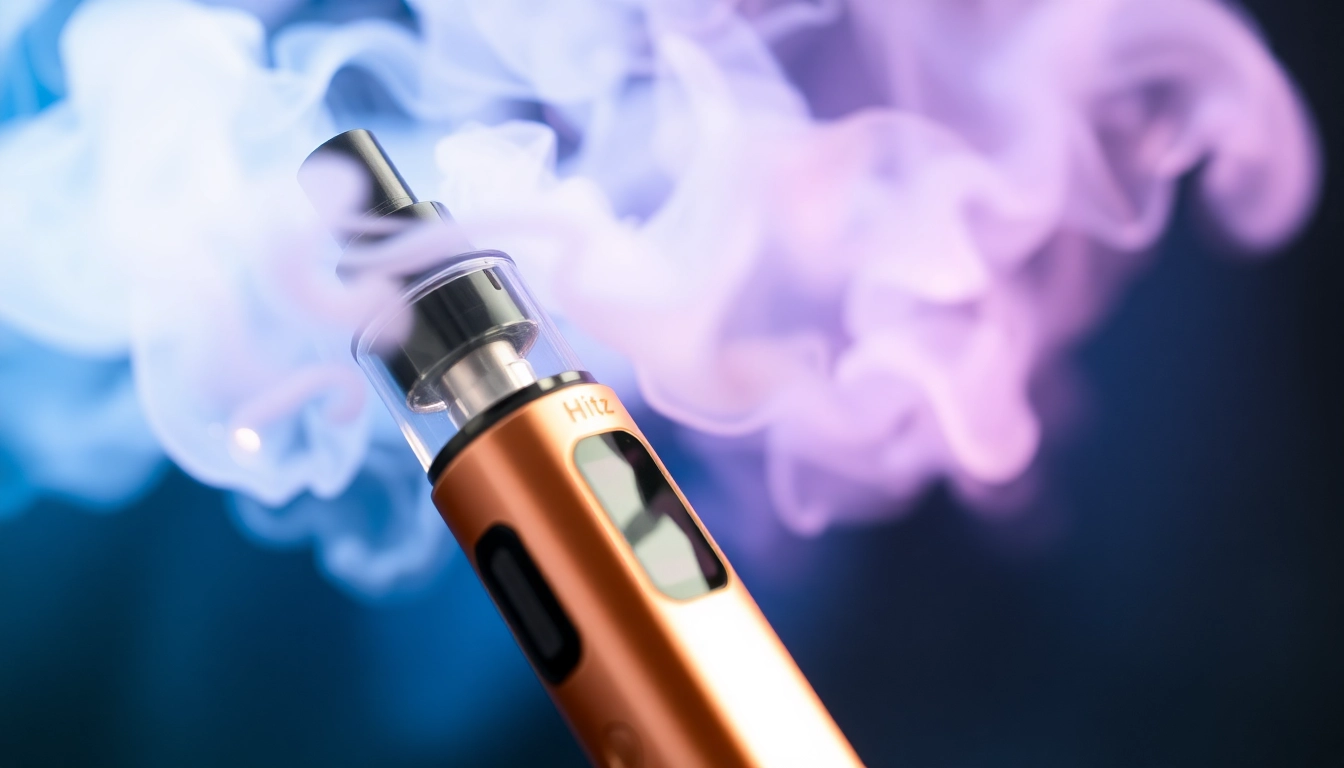
Understanding Botox Behandlung
What is Botox and How Does It Work?
Botox, a brand name for the botulinum toxin, is one of the most widely used cosmetic treatments globally. It functions by blocking nerve signals in the muscles where it is injected, causing a temporary reduction in muscle activity. When used aesthetically, Botox Behandlung is primarily known for smoothing out lines and wrinkles, particularly on the forehead, around the eyes, and between the eyebrows.
Originally developed for treating medical conditions such as muscle spasms and migraines, Botox is recognized for its role in cosmetic enhancements. The effects of Botox typically last three to six months, depending on various factors including the patient’s metabolism and the area treated. This makes it an appealing option for individuals looking for non-surgical approaches to achieve a younger appearance without extensive downtime.
Common Uses of Botox Behandlung
Although Botox is synonymous with wrinkle reduction, its applications extend far beyond mere aesthetics. Common uses include:
- Cosmetic Enhancements: Reducing crow’s feet, frown lines, and forehead lines.
- Medical Treatments: Addressing migraine headaches, excessive sweating (hyperhidrosis), and muscle disorders.
- Ophthalmological Conditions: Treating strabismus (crossed eyes) and blepharospasm (uncontrollable blinking).
The Safety of Botox Injections
Botox has been deemed safe for cosmetic and medical applications by various health organizations. However, like all medical procedures, it carries potential risks and side effects. Common side effects include temporary bruising or swelling at the injection site and headaches. Serious complications are rare but can include allergic reactions or unintended muscle weakening.
It is vital for patients considering Botox treatment to consult with qualified practitioners who can assess their individual health circumstances, discuss potential risks, and determine the best personalized treatment plans.
Preparing for Your Botox Behandlung
Consultation and Expectations
Your journey with Botox begins with a thorough consultation. During this stage, practitioners will review your medical history, discuss your aesthetic goals, and assess your suitability for the treatment. Transparent communication is key; patients should articulate their expectations and any concerns regarding the procedure.
During this consultation, practitioners should explain the treatment process, expected outcomes, possible side effects, and answer any questions you may have. Managing expectations is crucial to achieving satisfactory results, as some patients may expect immediate perfection while minor adjustments may sometimes be necessary after the initial treatment.
Pre-Treatment Guidelines
Prior to your Botox treatment, there are several steps you can take to prepare for the procedure:
- Avoid Blood Thinners: Avoid medications such as aspirin or ibuprofen for at least a week before the procedure to minimize bruising.
- Stay Hydrated: Drink plenty of water leading up to your appointment to help with recovery.
- No Alcohol: Refrain from alcoholic beverages 24 hours prior to minimize the risk of swelling and bruising.
Post-Care Tips for Best Results
After receiving Botox injections, proper aftercare enhances the treatment’s effectiveness. Here are some recommendations:
- Avoid Touching the Area: Refrain from rubbing or massaging the treated areas for at least 24 hours to lessen the risk of migration.
- Stay Upright: Remain upright for several hours post-treatment to ensure optimal absorption of the toxin.
- Say No to Exercise: Avoid strenuous exercise for 24 hours to prevent increased blood flow to the face.
Benefits of Botox Behandlung
Immediate Effects and Long-Term Results
One of the primary benefits of Botox is the immediacy of its effects. Patients typically begin noticing results within 24 to 48 hours, with peak results visible within two weeks. This quick turnaround time makes Botox a convenient option for patients seeking rapid improvements before events or special occasions.
Moreover, regular Botox treatments can lead to cumulative effects, where muscles may become less reactive over time, potentially extending the duration of the effects beyond the standard three to six months.
Comparison with Other Anti-Aging Treatments
When exploring anti-aging treatments, it’s essential to compare your options. Unlike fillers that add volume, Botox specifically targets muscle activity. Chemical peels and laser treatments also offer benefits but may entail longer recovery times and a greater risk of skin irritation.
Botox stands out as a minimally invasive option with fewer associated risks compared to surgical procedures, making it a preferred choice among many patients. Its versatility in treating various areas enhances its value in the realm of cosmetic treatments.
Addressing Common Misconceptions About Botox
Misconceptions surrounding Botox can often deter potential patients. Some believe it creates a frozen smile or that it is solely for older individuals. In reality, Botox can be beneficial for individuals in their late 20s and beyond to prevent wrinkles from forming.
Additionally, when administered by skilled practitioners, Botox treatments can be tailored to create naturally expressive looks without the harsh “frozen” appearance. Education is crucial in dispelling these myths, allowing patients to make informed decisions about their aesthetics.
Cost Considerations for Botox Behandlung
Typical Pricing and Factors Influencing Costs
The costs of Botox treatment can vary significantly based on several factors, including location, expertise of the practitioner, and extent of the area being treated. On average, the price per unit can range from $10 to $20, with the total cost ranging anywhere from $200 to over $1,000 depending on individual treatments.
Additionally, geographic considerations play a significant role, as urban centers may report higher prices due to demand. Patients should discuss pricing during their consultation to understand the expected costs based on their customized treatment plans.
Insurance Coverage and Payment Options
Since Botox is considered a cosmetic treatment, most insurance plans do not cover its costs unless it is used for a recognized medical condition, such as migraines or excessive sweating. Consequently, patients should be prepared for out-of-pocket expenses.
Many clinics offer flexible payment options, including financing plans or payment through health savings accounts (HSAs), making the investment in one’s appearance more manageable for various budgets.
Budgeting for Ongoing Treatments
As the effects of Botox are temporary, ongoing treatments will be necessary for maintenance. Patients should budget for these recurring costs, considering treatments every three to six months. Discussing a long-term plan with your practitioner can help streamline your goals and financial implications.
Finding the Right Provider for Botox Behandlung
Tips for Choosing a Qualified Practitioner
Choosing the right provider is foundational for a safe and effective Botox experience. Patients should seek practitioners who are board-certified and specialize in cosmetic procedures. Reviews, testimonials, and before-and-after photos can provide insights into the practitioner’s skill level and the satisfaction of previous patients.
Questions to Ask During Your Consultation
Having a list of questions prepared for your initial consultation can help ensure you find the right fit. Essential questions include:
- What is your experience with Botox injections?
- Can you show me before-and-after photos of past patients?
- What should I expect during and after the treatment?
- What is your policy on follow-up treatments or adjustments?
Reading Reviews and Understanding Patient Experiences
Investigating online reviews can offer prospective patients a closer look at a practitioner’s reputation. Context is key; look for patterns in the feedback—such as satisfaction with results, professionalism of staff, and overall experience—to gauge potential outcomes for your treatment.
Word-of-mouth referrals from friends or family can also serve as reliable guidance in selecting a qualified injector. Building trust through positive experiences helps establish confidence in the procedure and enhances the likelihood of satisfactory results.







